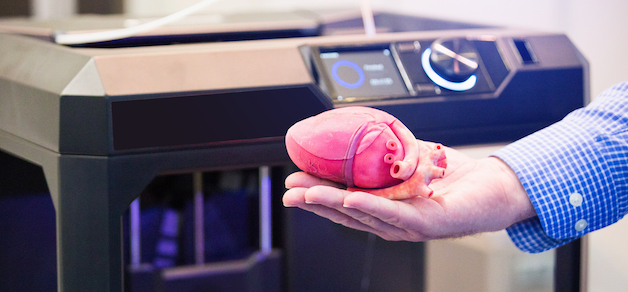
Imagine a world where everything needed to help patients lead better lives can be printed right there in your office. With a 3D printer and a little ingenuity, the concept of “normal procedures” could be morphed into something new.
We’re using bioprinters to create artificial living tissue, printing patient-specific organ replicas to allow surgeons to practice before operating on the real thing, and creating custom-made prosthetics that lower the price and make them available at price points more patients can manage.
But with that brings new challenges too.
Imagine being able to print an exact replica of a patient’s bone or organ, and being able to use that during surgery instead of finding a donor. Sounds good, right?
What sounds good in theory also has repercussions. Where there is good, there is bad. And just as quickly as new ideas are making their way into this marketplace, criminal behavior is doing what it can to keep up.
With 3D printing, there are two general areas where things can go wrong.
Design - As companies come up with new design strategies, others will find ways of breaking in and stealing them for reverse engineering.
Manufacturing - 3D printing opens up a whole new world of quality control. When you’re designing things one at a time, how do you know you’ve manufactured the item without defects?
According to a study conducted by researchers at the University of California Irvine and the University of Buffalo, 3D printers are quite easy to hack. And if someone steals a CAD file or files used for the 3D printing process, they will have the ability to print the items on their own with very high quality. Or worse, change them in any way they like.
For most of us, we tend to think of 3D printing based on our current knowledge. We can visualize printing a new bone, for instance, because that’s our starting point. But it doesn’t take too much imagination to start visioning where this technology can lead. Could it help improve memory? Can it refocus the brain? And if we go there, it’s equally easy to start imagining cyberattacks where break-ins occur to gain control of the mind. Why not just “tell” people what to do or who to vote for, for instance, by administering it through an implant?
Yes, it may sound like a spy novel at the moment, but history shows sci-fi is never too far off from eventual reality.
Even the FDA has recommendations in cybersecurity surrounding any medical device:
Manufacturers are responsible for remaining vigilant about identifying risks and hazards associated with their medical devices, including risks related to cybersecurity. They are responsible for putting appropriate mitigations in place to address patient safety risks and ensure proper device performance.
A lot is changing. Medical advances aren’t going to slow down, and that’s a good thing. But if we don’t take the time to develop security measures before things become mainstream, we could be facing an entirely new world - one we might not be so happy we created.
For IT Strategy, Cloud Conversion, or Help Desk Services reach out to us at Silver Linings Technology 360-450-4759.


